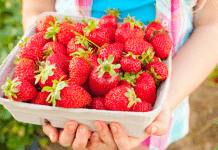Creating systems for our kids can be intimidating. That includes packing lunch, especially during a pandemic.
“Mom, can I PLEASE have a lunch box?” (February 2020)
“No…sorry. We already pay for the food at your school.” (Me: RELIEVED, Him: Disappointed)
“Mom, can I PLEASE have a lunch box?” (August 2020)
Ehhh, I guess…we’ll have to do that. (Me: A touch ANXIOUS, Him: TOTALLY ECSTATIC.)
When doing something new, I find comfort in systems/tools/resources that have already been vetted. There is comfort in knowing it worked for someone else. “If that mom can do it, then (fingers crossed) I can do it, too.”
As I embark on my newest adventure, I appreciate the moms who have come before me and worked out the kinks of packing lunches.
Lunch Box Guide: My Why
To me, lunch boxes are scary because a) I worry my kids won’t have enough to eat or will have too much food that will be wasted, b) they won’t be able to open the ketchup packet or applesauce twist-off cap and become so frustrated they will give up eating all together, c) they will become bored with the food options I provide, and finally d) lunch packing is time-consuming and will mess with our evening/morning schedules.
To alleviate the stress of the unknown, I’m doing research and practicing now, before game time—the first day of school. Doing a dry run before school starts will give me peace of mind about how much food they will need to sustain them for the second half of the day, which is good for their bodies. It will also help me develop new evening routines, which is good for my sanity.
Lunch Box Guide: My Method
It is crunch time. I’ve read reviews, gathered product links and helpful meal-plan printouts, and talked to 15 seasoned lunchbox moms about their favorite products.
This post isn’t sponsored. It is simply a mix of veteran-mom tips, reviews of products, and few a Instagram accounts to make our collective lives easier.
Big Question Number 1: What Do I Pack in my Kids’ Lunches?
I understand and respect that moms come to the table with different ideas and philosophies of how and what to feed our children. One thing that is standard is our kids eat FOOD. Here are a few resources, which I have found helpful as I practice and prepare for the new school year.
1. Super Kids: Lunch Packing Guide
I printed this printable guide and have it on my fridge so I can easily remind myself to get something from each category for the day’s lunch. It is also easy to pick and choose foods from different categories based on kid/parent preferences. My kids have different dietary needs and restrictions due to allergies, so their lunches will NOT be the same.
Cost: Free
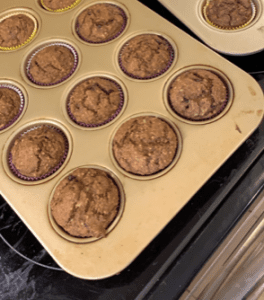
2. Kids Eat in Color: Real Easy Weekdays
I’ve used this meal plan in different ways, but the recipes for her freezer snacks are my favorite. A wide variety plans for kids lunches and snacks, includes 60 recipes. No shortage of healthy food options and substitutions for allergies. Bonus, it includes a grocery shopping list and gear recommendations.
Cost: $37
3. Yummy Toddler Food
A resource that includes dozens of articles categorized by type of lunchbox, age of child (though mainly younger), nut-free, food preferences, etc. I can see myself using this when creativity runs dry and I need new ideas or when the boys stop liking something they liked last week.
During my practice run, I searched this site for getting a little more creative. My little kids really like meals that are deconstructed. You can easily find ideas that meet your toddler/young child’s vast needs.
Cost: Free
Big Question Number 2: What Lunch Box Should I Use?
There are a couple of things to consider here. Will my children have access to refrigeration? Will they have access to a microwave? Do I want them to use either of these options? This can help you decide how “thermal” you need your lunchbox to be. Another thing to consider is if the size of the lunch box fits the food containers I already have. Or will I need to get new containers if I get a new box? Can they easily open the box on their own? Do I already have freezer packs or will I need to get them to fit the new lunch box? SO MANY lunch box options, here are a few if you need some direction.
1. Bizz Bento Box
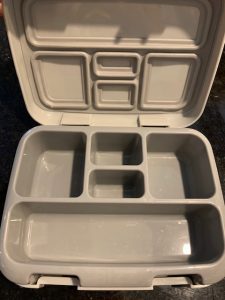
A traditional, leak-proof, bento box with a removable tray and silverware.
Usage: I bought these a year ago to take to the zoo and parks. If my 4-year-old has to open this to get to his snack he might just keep eating the rest of the lunch. Apart from his lunch, he will need to access a snack for morning and afternoon, so I will pack this in my kid’s lunch boxes some days, but will also include other snacks, because once my kids see their lunches as snack time its over. This one does not leak, but also does not keep food warm. The tray is microwavable and dishwasher safe.
Cost: $32
2. Sistema Plastic Lunch Box
A hard plastic, bento-style box
Usage: There are many different lunch box styles. These are really durable and good for on the go. These are also available everywhere, Walmart, Target, and Amazon.
Cost: $6-$23
3. Planet Box
Another bento-style box, but this one is stainless steel with a handle. This is similar to a bento box, but includes containers. These containers are good for any age, from littles to adults. There are a few different systems.
Usage: Sturdy enough for a big kid. Dishwasher safe, can fit in a lunch bag if needed.
Cost: Pricey at $40
4. Pottery Barn Lunch Box
A cloth lunch box that comes in different varieties, has long strap, short handles, space for water bottle, and pocket for napkin/utensils.
Usage: I bought this, because of the cute designs that matched backpacks my kids have from last year. Has an exterior pocket for water-bottles, space for 3-4 containers. My kids will not have refrigeration. I liked that the freezer pack is velcroed into the lunch box and it’s easily washable. Food containers not included.
Cost: $11-28
Big Question Number 3: What Food Containers Should I use?
Everyone has their own preferences, plastic, glass, stainless, silicone, reusable and disposable. Whatever your preference, here’s a few tips I’ve received from moms.
1. Stainless Steel
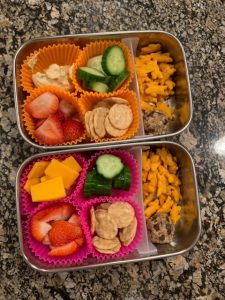
Mama Leah recommends these U-Konserve containers because they hold her children’s whole lunch, and because they have a lid, they can easily be thrown in a bag or the front seat of the car for a lunch on the go. These containers are great for her two littles, ages four and two. If you use this one for your kid who is going to “in-person” school, you’ll probably need the lunch box, too, so they will have extra space for additional morning/afternoon/aftercare snacks if needed.
I’m using stainless steel Spencer Bento containers because I know the dimensions work with the our lunch boxes. The lids are a little tough to open for my 4-year-old so he has been practicing.
2. Silicone
Mama Suzy says Stashers have been really helpful for her crew, going to and from baseball practice, environmentally, cost-effective ways to contain snacks.
3. Cloth Reusable Bags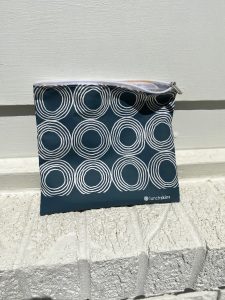
Mom Samantha swears by Lunchskins. They are reusable, machine washable, durable, and environmentally friendly.
Big Question Number 4: “Which water bottle is appropriate for my kids?”
Some considerations during this pandemic include: is the mouthpiece covered? Is it easy to sanitize? Is it easy for my child to open without help?
1. Nalgene
Recommended for kids of all ages. Nalgene has bottles that are easy to open for preschool age. The bigger bottles for upper elementary age to high school has a mouth piece that is covered, which was the big draw for one mom. They can be found a variety of places, from Amazon, Urban Outfitter, Anthropology, Target, etc.
2. S’well
Recommended by Mama Becky H because S’well are durable. They stainless steel bottles have a twist off top, so this would be a good option for middle and high school students. Also, these bottles have great designs for older kids and adults to express themselves!
3. Camelbak
Recommended for durability, but seems as though most versions are best for big kids. My daughter, who is two, has figured out how to bite down on the straw in order to release the water from the bottle, so I think it can be used by anyone. The straw is partially exposed when the lid is closed, so not fully protected.
4. Aosubu
Mom Victoria recommends this water bottle because it fits easily into lunch boxes and NEVER leaks.
5. Zak!
Mom Jollene recommends this bottle because the straw is fully encased until you press one button. She appreciates that her son’s dirty fingers don’t have to touch the straw! Amen, Sister!
Final Question: How do I get my child to EAT the lunch I pack?
These tips are from teacher moms!
- Teach your kid how to open/close/assemble all the containers in the lunch box.
- Demonstrate and practice with your child if they need to construct a pizza or add dressing to a sandwich, so a teacher isn’t necessary to start eating.
- Because they may no longer be available at school, be sure to account for utensils, sauces/dips, and napkins, which may .
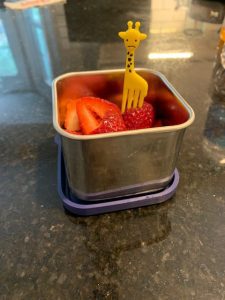
- Insert love notes, cards, drawings on napkins, etc. to make lunch an emotional boost they can look forward to. My favorite was the mom who wrote a message on her daughter’s banana with a Sharpie.
- Use playful accessories, like sandwich/veggie/fruit cutters, fun plates/dishes, creative silverware.
Please drop a comment with other gems I’ve missed!




